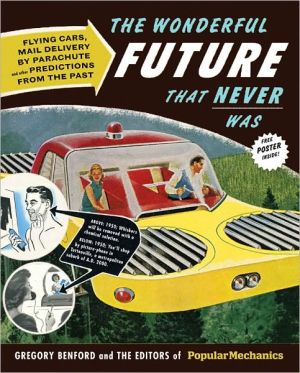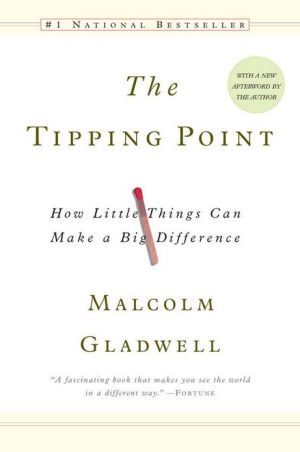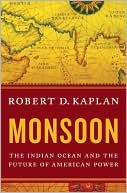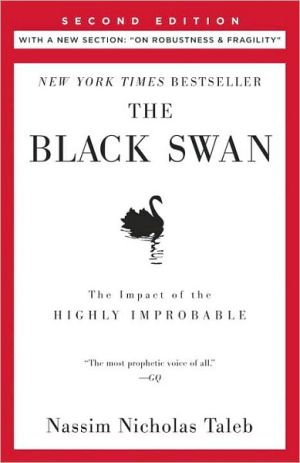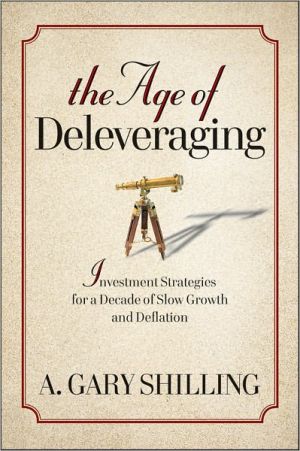The Wonderful Future That Never Was: Flying Cars, Mail Delivery by Parachute, and Other Predictions from the Past
Between 1903 and 1969, scientists and other experts made hundreds of predictions in Popular Mechanics magazine about what the future would hold. Their forecasts ranged from ruefully funny to eerily prescient and optimistically utopian. Here are the very best of them, culled from hundreds of articles, complete with the original, visually stunning retro art. They will capture the imagination of futurists in the same way Jules Verne's writing did a century earlier. Every chapter features an...
Search in google:
Between 1903 and 1969, scientists and other experts made hundreds of predictions in Popular Mechanics magazine about what the future would hold. Their forecasts ranged from ruefully funny to eerily prescient and optimistically utopian. Here are the very best of them, culled from hundreds of articles, complete with the original, visually stunning retro art. They will capture the imagination of futurists in the same way Jules Verne's writing did a century earlier. Every chapter features an introduction by astrophysics professor, science-fiction author, and former NASA advisor Gregory Benford.PAST PREDICTIONS OF OUR FUTURE INCLUDE:Skyscrapers so tall they'll have their own climate • Underground pneumatic tubes to replace garbage trucks • Rooftop lakes that serve as air conditioning systems • Clothes made from asbestos and aluminum • Mail sorted by robots and delivered by parachutes Library Journal Predictions abound as society guesses what the future will bring—but does today's world match the past's predictions? Nebula Award-winning sf author Benford (physics, Univ. of California; The Sunborn) and the editors of Popular Mechanics here examine that prospect by reviewing predictions printed in the magazine over the past century. The majority were wrong, as the title implies; Americans don't go to work in Jetson-like flying cars or eat food made from sawdust. However, many were correct; televisions are thin enough to hang on a wall like pictures (predicted in 1954). Other guesses were right but for the wrong reasons. Widespread use of video phone calls (predicted in the 1940s) was enabled by the Internet and Skype rather than videophones combining telephones with TV transmitters. VERDICT Benford provides an interesting tour of the future views of the past. Great fun for history of science/technology buffs.—William Baer, Georgia Inst. of Technology Lib., Atlanta
\ From Barnes & NoblePredicting is a risky business, but for bystanders, faulty forecasts have the makings of great fun. For decades, for instance, the pundits of Popular Mechanics rolled out illustrated features about flying cars and buses, mail-sorting robots, and underground cities that piqued our youthful interest but didn't always achieve widespread fruition. All these utopian fancies and more reemerge in this refreshingly retro, delightfully rich collection of past predictions of our future. The illustrations alone are worth the price of the book. Every chapter features an introduction by scientist and science fiction writer Gregory Banford.\ \ \ \ \ \ Library JournalPredictions abound as society guesses what the future will bring—but does today's world match the past's predictions? Nebula Award-winning sf author Benford (physics, Univ. of California; The Sunborn) and the editors of Popular Mechanics here examine that prospect by reviewing predictions printed in the magazine over the past century. The majority were wrong, as the title implies; Americans don't go to work in Jetson-like flying cars or eat food made from sawdust. However, many were correct; televisions are thin enough to hang on a wall like pictures (predicted in 1954). Other guesses were right but for the wrong reasons. Widespread use of video phone calls (predicted in the 1940s) was enabled by the Internet and Skype rather than videophones combining telephones with TV transmitters. VERDICT Benford provides an interesting tour of the future views of the past. Great fun for history of science/technology buffs.—William Baer, Georgia Inst. of Technology Lib., Atlanta\ \
